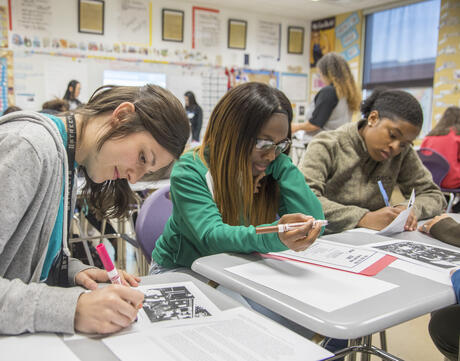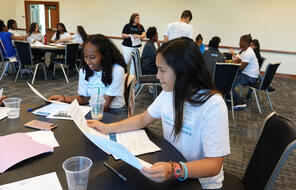
Step 3: Adding to Evidence Logs, 1 of 4
At a Glance
Language
English — USSubject
- History
- Social Studies
Grade
9–12Duration
One 50-min class period- The Holocaust
- Genocide
- Antisemitism
- Democracy & Civic Engagement
Overview
About this Assessment
After students have completed Lesson 9: The Weimar Republic, it is an appropriate time to return to the course assessment prompt and consider new evidence from the history of the Weimar era that they might use to inform and support the position or project they are developing. The activities below will guide students as they consider the choices Germans made during the Weimar Republic and how learning about those choices can help guide our responses to injustices in our communities and in the world today. In addition to revisiting the assessment prompt, students will also start to evaluate the quality and relevance of the evidence they are gathering. Remind students that it is important that they keep the materials for the assessment (journal reflections, evidence logs, writing handouts) in a safe place, because they will refer back to them over the course of the unit as they prepare to write their final essay or develop their CTP project.
Procedure
Activities
Materials and Downloads
Quick Downloads
Download the Files
Download allGet Files Via Google
Step 3: Adding to Evidence Logs, 1 of 4
The Weimar Republic
The Rise of the Nazi Party
Unlimited Access to Learning. More Added Every Month.
Facing History & Ourselves is designed for educators who want to help students explore identity, think critically, grow emotionally, act ethically, and participate in civic life. It’s hard work, so we’ve developed some go-to professional learning opportunities to help you along the way.
Exploring ELA Text Selection with Julia Torres
On-Demand

Working for Justice, Equity and Civic Agency in Our Schools: A Conversation with Clint Smith
On-Demand

Centering Student Voices to Build Community and Agency
On-Demand




